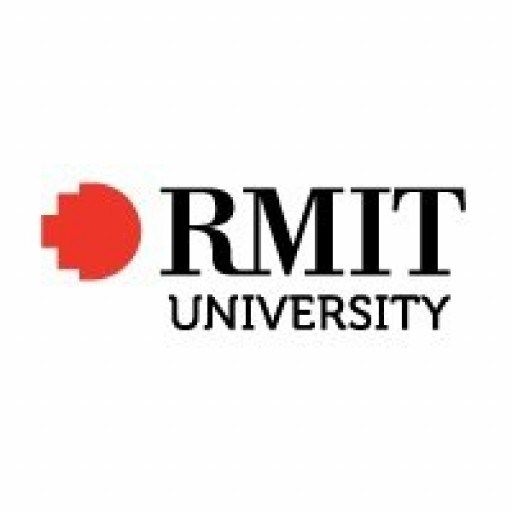The Interpreting (LOTE English) program at the Global Business College of Australia is designed to equip students with the essential skills and knowledge required to succeed in the dynamic and growing field of language interpretation. This comprehensive course offers a deep immersion into the art and science of interpreting between languages, with a particular focus on translating from a language other than English into English. Throughout the program, students will develop advanced linguistic proficiency, cultural competency, and professional interpreting techniques that are vital for a successful career in various sectors, including government, healthcare, legal, community services, and international business. The curriculum is structured to provide both theoretical understanding and practical experience, ensuring graduates are well-prepared to meet the demands of real-world interpreting scenarios. Students will engage in a range of learning activities, including role-plays, simulated interpreting exercises, and industry placements, which enhance their ability to interpret accurately and ethically under pressure. The program emphasizes the importance of confidentiality, neutrality, and professionalism, aligning with industry standards and best practices. By the end of the course, graduates will possess a high level of competence in both consecutive and simultaneous interpreting methods, along with strong research and communication skills to adapt to diverse interpreting contexts. This qualification aims to open doors to various career opportunities within Australia's multicultural society, supporting effective communication and fostering greater understanding among diverse communities. The college's experienced teaching staff, combined with modern facilities and industry connections, ensure that students receive a quality education that meets the needs of the evolving interpreting landscape. Whether students aspire to work as freelance interpreters, in public services, or within private organizations, the Interpreting (LOTE English) program provides a solid foundation for a rewarding and impactful career in language services.
Program Overview:
The Interpreting (LOTE English) program at Global Business College of Australia is designed to equip students with the essential skills and knowledge required for a successful career in professional interpreting and translating. This comprehensive course provides students with a solid foundation in both theoretical and practical aspects of interpretation, focusing on developing high-level language proficiency, cultural competence, and specialized interpreting techniques.
Throughout the program, students will engage in intensive language training to ensure fluency and accuracy in both their native language (LOTE) and English. The curriculum emphasizes understanding the nuances, idioms, and cultural contexts of the languages involved, enabling students to interpret effectively in diverse settings such as diplomatic events, legal proceedings, medical consultations, conferences, and business meetings.
The program integrates a variety of teaching methods, including lectures, practical interpretation exercises, role-playing scenarios, and real-world internships. Students will learn to handle complex subject matter, manage stress, and prioritize information during high-pressure interpreting situations. Additionally, the program covers ethical considerations, professional standards, and the importance of confidentiality in the interpreting profession.
Courses are structured to progressively build confidence and competence, starting from basic language and interpreting skills to advanced techniques used in specialized fields. Students will have opportunities to practice both consecutive and simultaneous interpreting, gaining experience through simulated assignments and industry partnerships.
Career pathways after completing the Interpreting (LOTE English) program include working as freelance interpreters, joining governmental agencies, international organizations, law firms, healthcare institutions, and multinational corporations. By the end of the program, graduates will be equipped with the skills necessary to meet the demands of the globalized communication landscape and will be well-prepared to undertake professional certification examinations.
Global Business College of Australia is committed to providing a supportive learning environment with experienced instructors, state-of-the-art facilities, and industry connections that facilitate practical learning and employment opportunities. This program is ideal for individuals passionate about languages, intercultural communication, and making a positive impact in international and multicultural settings.
Program Requirements:
To successfully complete the Diploma of Interpreting (LOTE-English) at the Global Business College of Australia, students must fulfill a series of academic and practical requirements designed to develop their interpreting skills and language proficiency. The program requires students to undertake a comprehensive curriculum comprising both theoretical knowledge and practical application in interpreting techniques. Students are expected to demonstrate proficiency in both their LOTE language and English, ensuring effective communication across diverse contexts. The program includes coursework in language structures, cultural nuances, ethical considerations in interpreting, and specialized terminology relevant to various sectors such as healthcare, legal, and business environments.
Students must complete a specified number of credit units as stipulated by the program structure, which typically includes core subjects focusing on language skills, interpreting methodologies, and communication strategies. Practical training components are integral, involving simulated interpreting exercises, role-plays, and placements that provide real-world experience. Assessment methods include written assignments, oral examinations, and practical interpreting tests administered throughout the course duration. To graduate, students must achieve a minimum grade point average as defined by the college's academic regulations. Additionally, students are required to attend all scheduled classes, complete all coursework by designated deadlines, and actively participate in practical sessions.
Language proficiency prerequisites generally include demonstrating a high level of competency in the LOTE language and English prior to enrollment, often through standardized testing or college-level language assessments. For international students, proof of English language proficiency via recognized tests such as IELTS or TOEFL may also be required. The program aims to prepare students for professional interpreting careers, with many graduates seeking employment in sectors like government agencies, courts, hospitals, and international organizations. Successful completion of the program confers a diploma qualification, recognizing the graduate's ability to interpret accurately and ethically in a range of professional settings.
Overall, the program combines academic coursework, practical skill development, and assessment requirements to ensure graduates are competent interpreters capable of meeting industry standards. The college emphasizes ongoing learning, professional development, and adherence to ethical principles in interpreting practice as core components of the program.
The Interpreting (LOTE English) program at the Global Business College of Australia offers a flexible approach to financing studies, designed to accommodate students from diverse backgrounds. Tuition fees are structured to be competitive within the Australian higher education sector, ensuring students receive quality education at an accessible cost. International students are required to budget for tuition fees, living expenses, and additional costs such as materials and resources. The college provides various payment options, including upfront payments, installment plans, and scholarships for eligible students. Scholarships are awarded based on merit and financial need, aiming to support talented individuals in pursuing their career goals in interpreting. Students are encouraged to explore external funding options, such as government bursaries, private scholarships, and educational loans available through financial institutions. The college's support services include information sessions on financial planning and assistance with scholarship applications. Payment deadlines are clearly communicated to allow students adequate time to organize their finances. For international students, there is also guidance on overseas student health cover (OSHC) and other compulsory insurances. The program's duration, typically ranging from several semesters, allows students to manage their finances over an extended period, making it easier to plan their budgets accordingly. The institution emphasizes transparency in fee disclosure and works to ensure students are aware of all costs involved before commencing studies. Overall, the college is committed to providing affordable education options for students aiming to build a career in interpreting while ensuring financial stability and support throughout their academic journey.
The Interpreting (LOTE English) program at the Global Business College of Australia is designed to equip students with the essential skills and knowledge required for a career in language translation and interpretation. This course provides comprehensive training in both language proficiency and interpreting techniques, focusing on direct communication translation and cultural nuances between English and the selected language of study (LOTE). The program aims to develop students' listening, note-taking, memory, and rapid language processing skills to facilitate accurate and efficient interpretation in various professional settings, such as legal, medical, business, and community environments.
Throughout the course, students engage in practical exercises that mimic real-world interpreting situations, enhancing their ability to work under pressure while maintaining high standards of accuracy and confidentiality. The curriculum covers a broad range of topics, including ethics in interpreting, terminology management, and the use of modern interpreting technology. Additionally, students learn about the importance of cultural sensitivity and ethical considerations, which are critical in delivering effective interpretation services. The program is tailored to meet the needs of those who aspire to become professional interpreters, offering opportunities for internships, industry placements, and hands-on practice.
Graduates of this program are well-prepared to work as interpreters in various sectors, including government agencies, legal courts, healthcare facilities, and private interpreting services. The program emphasizes both theoretical understanding and practical application, ensuring that students graduate with a balanced combination of knowledge and skills. Upon completion, students are awarded a certificate or diploma that recognizes their ability to interpret accurately and confidently between English and the specified LOTE, forming a solid foundation for a successful career in interpreting services. With a curriculum aligned to industry standards and ongoing support from experienced faculty members, the Interpreting (LOTE English) program at the Global Business College of Australia offers a valuable pathway for individuals committed to linguistic excellence and cross-cultural communication.





